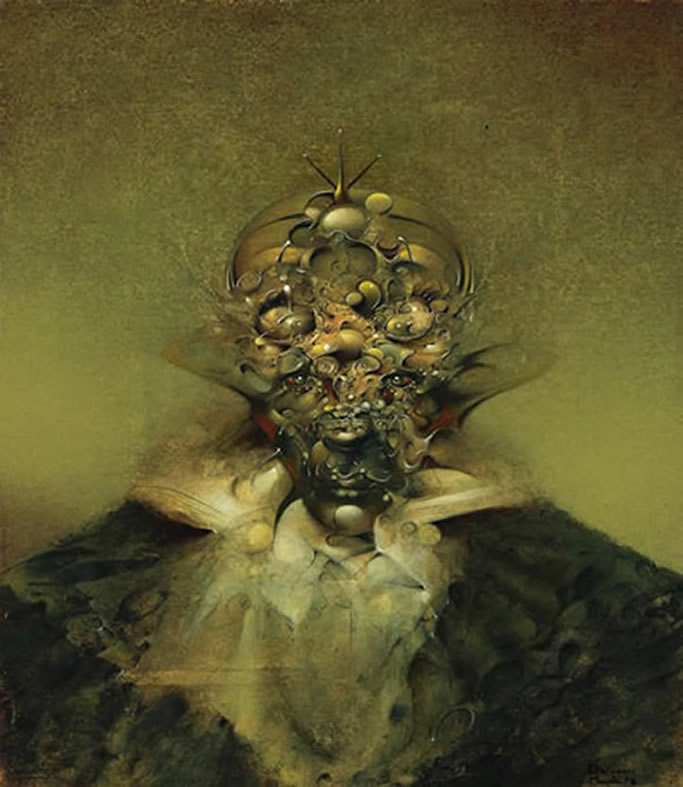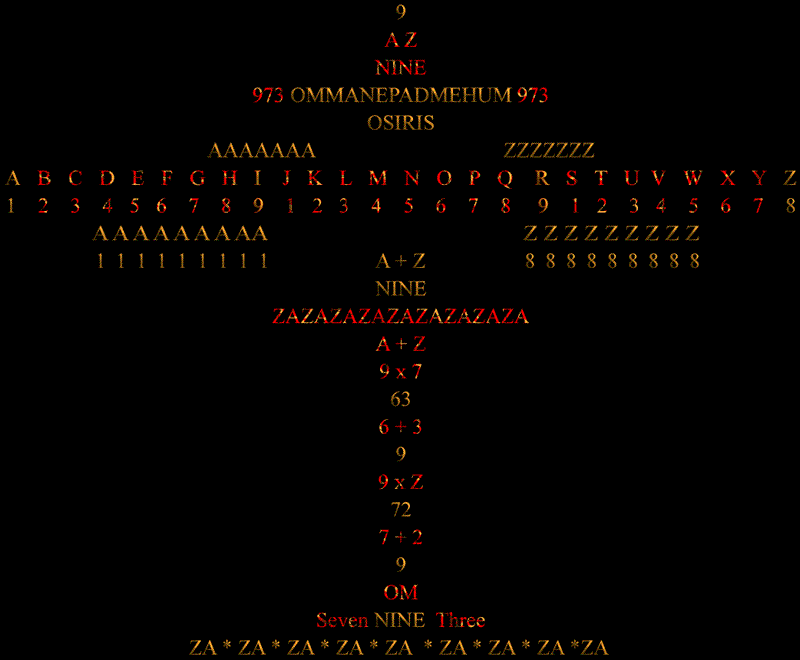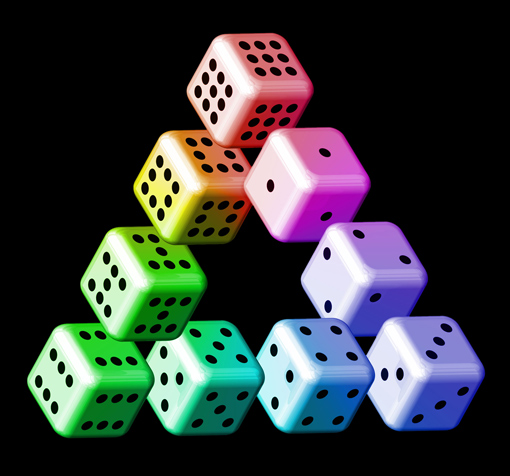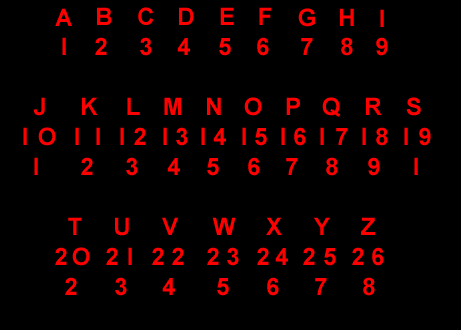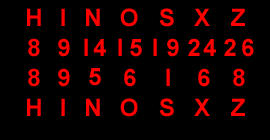|
WORK DAYS OF GOD Herbert W Morris D.D.circa 1883 Page 22
LIGHT AND LIFE Lars Olof Bjorn 1976 Page 197 "By writing the 26 letters of the alphabet in a certain order one may put down almost any message (this book 'is written with the same letters' as the Encyclopaedia Britannica and Winnie the Pooh, only the order of the letters differs). In the same way Nature is able to convey with her language how a cell and a whole organism is to be constructed and how it is to function. Nature has succeeded better than we humans; for the genetic code there is only one universal language which is the same in a man, a bean plant and a bacterium." "BY WRITING THE 26 LETTERS OF THE ALPHABET IN A CERTAIN ORDER ONE MAY PUT DOWN ALMOST ANY MESSAGE"
"BY WRITING THE 26 LETTERS OF THE ALPHABET IN A CERTAIN ORDER ONE MAY PUT DOWN ALMOST ANY MESSAGE"
A HISTORY OF GOD Karen Armstrong 1993 The God of the Mystics Page 250 "Perhaps the most famous of the early Jewish mystical texts is the fifth century Sefer Yezirah (The Book of Creation). There is no attempt to describe the creative process realistically; the account is unashamedly symbolic and shows God creating the world by means of language as though he were writing a book. But language has been entirely transformed and the message of creation is no longer clear. Each letter of the Hebrew alphabet is given a numerical value; by combining the letters with the sacred numbers, rearranging them in endless configurations, the mystic weaned his mind away from the normal connotations of words."
THIS IS THE SCENE OF THE SCENE UNSEEN THE UNSEEN SEEN OF THE SCENE UNSEEN THIS IS THE SCENE
THE FAR YONDER SCRIBE AND OFT TIMES SHADOWED SUBSTANCES WATCHED IN FINE AMAZE THE ZED ALIZ ZED IN SWIFT REPEAT SCATTER STAR DUST AMONGST THE LETTERS OF THEIR PROGRESS AT THE THROW OF THE NINTH RAM WHEN IN CONJUNCTION SET THE FAR YONDER SCRIBE MADE RECORD OF THEIR FALL
NUMBER 9 THE SEARCH FOR THE SIGMA CODE Cecil Balmond 1998 Cycles and Patterns Page 165 Patterns "The essence of mathematics is to look for patterns. Our minds seem to be organised to search for relationships and sequences. We look for hidden orders. These intuitions seem to be more important than the facts themselves, for there is always the thrill at finding something, a pattern, it is a discovery - what was unknown is now revealed. Imagine looking up at the stars and finding the zodiac! Searching out patterns is a pure delight. Suddenly the counters fall into place and a connection is found, not necessarily a geometric one, but a relationship between numbers, pictures of the mind, that were not obvious before. There is that excitement of finding order in something that was otherwise hidden. And there is the knowledge that a huge unseen world lurks behind the facades we see of the numbers themselves."
FINGERPRINTS OF THE GODS A QUEST FOR THE BEGINNING AND THE END Graham Hancock 1995 Chapter 32 Speaking to the Unborn Page 285 "It is understandable that a huge range of myths from all over the ancient world should describe geological catastrophes in graphic detail. Mankind survived the horror of the last Ice Age, and the most plausible source for our enduring traditions of flooding and freezing, massive volcanism and devastating earthquakes is in the tumultuous upheavals unleashed during the great meltdown of 15,000 to 8000 BC. The final retreat of the ice sheets, and the consequent 300-400 foot rise in global sea levels, took place only a few thousand years before the beginning of the historical period. It is therefore not surprising that all our early civilizations should have retained vivid memories of the vast cataclysms that had terrified their forefathers. A message in the bottle of time" 'Of all the other stupendous inventions,' Galileo once remarked, what sublimity of mind must have been his who conceived how to communicate his most secret thoughts to any other person, though very distant either in time or place, speaking with those who are in the Indies, speaking to those who are not yet born, nor shall be this thousand or ten thousand years? And with no greater difficulty than the various arrangements of two dozen little signs on paper? Let this be the seal of all the admirable inventions of men.3 If the 'precessional message' identified by scholars like Santillana, von Dechend and Jane Sellers is indeed a deliberate attempt at communication by some lost civilization of antiquity, how come it wasn't just written down and left for us to find? Wouldn't that have been easier than encoding it in myths? Perhaps. "What one would look for, therefore, would be a universal language, the kind of language that would be comprehensible to any technologically advanced society in any epoch, even a thousand or ten thousand years into the future. Such languages are few and far between, but mathematics is one of them" "WRITTEN IN THE ETERNAL LANGUAGE OF MATHEMATICS"
ZERO ONE TWO THREE FOUR FIVE SIX SEVEN EIGHT NINE R+HREE+OU+R+I+VE+I+EV+I+I ZERO ONE TWO THREE FOUR FIVE SIX SEVEN EIGHT NINE
ZERO ONE TWO THREE FOUR FIVE SIX SEVEN EIGHT NINE R+HREE+OU+R+I+VE+I+EV+I+I ZERO ONE TWO THREE FOUR FIVE SIX SEVEN EIGHT NINE
85R6 655 256 2HREE 6OUR 6IVE 1I6 1EV55 5I782 5I55 R+HREE+OU+R+I+VE+I+EV+I+I ZERO ONE TWO THREE FOUR FIVE SIX SEVEN EIGHT NINE R+HREE+OU+R+I+VE+I+EV+I+I 85R6 655 256 2HREE 6OUR 6IVE 1I6 1EV55 5I782 5I55
ZERO ONE TWO THREE FOUR FIVE SIX SEVEN EIGHT NINE 8596 655 256 28955 6639 6945 196 15455 59782 5955 R+HREE+OU+R+I+VE+I+EV+I+I 8596 655 256 28955 6639 6945 196 15455 59782 5955 ZERO ONE TWO THREE FOUR FIVE SIX SEVEN EIGHT NINE
ZERO ONE TWO THREE FOUR FIVE SIX SEVEN EIGHT NINE 9+8+9+5+5+6+3+9+9+4+5+9+5+4+9+9 9+8+9+5+5+6+3+9+9+4+5+9+5+4+9+9 ZERO ONE TWO THREE FOUR FIVE SIX SEVEN EIGHT NINE
ZERO ONE TWO THREE FOUR FIVE SIX SEVEN EIGHT NINE 8596 655 256 28955 6639 6945 196 15455 59782 5955 7x9 = 63 36 = 9x7 8596 655 256 28955 6639 6945 196 15455 59782 5955 ZERO ONE TWO THREE FOUR FIVE SIX SEVEN EIGHT NINE
ZERO ONE TWO THREE FOUR FIVE SIX SEVEN EIGHT NINE ZEO ONE TWO T F F SX SEN EGHT NNE Z+E+O+ O+N+E+T+W+O+T+F+F+S+X+S+E+N+ E+G+H+T+N+N+E 8+5+6+6+5+5+2+5+6+2+6+6+1+6+1+5+5+5+7+8+2+5+5+5 Z+E+O+ O+N+E+T+W+O+T+F+F+S+X+S+E+N+ E+G+H+T+N+N+E ZERO ONE TWO THREE FOUR FIVE SIX SEVEN EIGHT NINE
ZERO ONE TWO THREE FOUR FIVE SIX SEVEN EIGHT NINE 8596 655 256 28955 6639 6945 196 15455 59782 5955 R HREE OUR IVE I EV I I R+H+R+E+E+O+U+R+I+V+E+I+E+V+I+I 9+8+9+5+5+6+3+9+9+4+5+9+5+4+9+9 R+H+R+E+E+O+U+R+I+V+E+I+E+V+I+I R HREE OUR IVE I EV I I 8596 655 256 28955 6639 6945 196 15455 59782 5955 ZERO ONE TWO THREE FOUR FIVE SIX SEVEN EIGHT NINE
A MAZE IN ZAZAZA ENTER AZAZAZ AZAZAZAZAZAZAZZAZAZAZAZAZAZA ZAZAZAZAZAZAZAZAZAAZAZAZAZAZAZAZAZAZ THE MAGICALALPHABET ABCDEFGHIJKLMNOPQRSTUVWXYZZYXWVUTSRQPONMLKJIHGFEDCBA 12345678910111213141516171819202122232425262625242322212019181716151413121110987654321
THE LIGHT IS RISING RISING IS THE LIGHT
THE LIGHT IS RISING NOW RISING IS THE LIGHT
THE DEATH OF GODS IN ANCIENT EGYPT Jane B. Sellars 1992 Page 204 "The overwhelming awe that accompanies the realization, of the measurable orderliness of the universe strikes modern man as well. Admiral Weiland E. Byrd, alone In the Antarctic for five months of polar darkness, wrote these phrases of intense feeling: Here were the imponderable processes and forces of the cosmos, harmonious and soundless. Harmony, that was it! I could feel no doubt of oneness with the universe. The conviction came that the rhythm was too orderly. too harmonious, too perfect to be a product of blind chance - that, therefore there must be purpose in the whole and that man was part of that whole and not an accidental offshoot. It was a feeling that transcended reason; that went to the heart of man's despair and found it groundless. The universe was a cosmos, not a chaos; man was as rightfully a part of that cosmos as were the day and night.10 Returning to the account of the story of Osiris, son of Cronos god of' Measurable Time, Plutarch takes, pains to remind the reader of the original Egyptian year consisting of 360 days. Phrases are used that prompt simple mental. calculations and an attention to numbers, for example, the 360-day year is described as being '12 months of 30 days each'. Then we are told that, Osiris leaves on a long journey, during which Seth, his evil brother, plots with 72 companions to slay Osiris: He also secretly obtained the measure of Osiris and made ready a chest in which to entrap him. The, interesting thing about this part of the-account is that nowhere in the original texts of the Egyptians are we told that Seth, has 72 companions. We have already been encouraged to equate Osiris with the concept of measured time; his father being Cronos. It is also an observable fact that Cronos-Saturn has the longest sidereal period of the known planets at that time, an orbit. of 30 years. Saturn is absent from a specific constellation for that length of time. A simple mathematical fact has been revealed to any that are even remotely sensitive to numbers: if you multiply 72 by 30, the years of Saturn's absence (and the mention of Osiris's absence prompts one to recall this other), the resulting product is 2,160: the number of years required, for one 30° shift, or a shift: through one complete sign of the zodiac. This number multplied by the /Page205 / 12 signs also gives 25,920. (And Plutarch has reminded us of 12) If you multiply the unusual number 72 by 360, a number that Plutarch mentions several times, the product will be 25,920, again the number of years symbolizing the ultimate rebirth. This 'Eternal Return' is the return of, say, Taurus to the position of marking the vernal equinox by 'riding in the solar bark with. Re' after having relinquished this honoured position to Aries, and subsequently to the to other zodiacal constellations. Such a return after 25,920 years is indeed a revisit to a Golden Age, golden not only because of a remarkable symmetry In the heavens, but golden because it existed before the Egyptians experienced heaven's changeability. But now to inform the reader of a fact he or she may already know. Hipparaus did: not really have the exact figures: he was a trifle off in his observations and calculations. In his published work, On the Displacement of the Solstitial and Equinoctial Signs, he gave figures of 45" to 46" a year, while the truer precessional lag along the ecliptic is about 50 seconds. The exact measurement for the lag, based on the correct annual lag of 50'274" is 1° in 71.6 years, or 360° in 25,776 years, only 144 years less than the figure of 25,920. With Hipparchus's incorrect figures a 'Great Year' takes from 28,173.9 to 28,800 years, Incorrect by a difference of from 2,397.9 years to 3,024. Since Nicholas Copernicus (AD 1473-1543) has always been credited with giving the correct numbers (although Arabic astronomer Nasir al-Din Tusi,11 born AD 1201, is known to have fixed the Precession at 50°), we may correctly ask, and with justifiable astonishment 'Just whose information was Plutarch transmitting' AN IMPORTANT POSTSCRIPT Of course, using our own notational system, all the important numbers have digits that reduce to that amazing number 9 a number that has always delighted budding mathematician. Page 206 Somewhere along the way, according to Robert Graves, 9 became the number of lunar wisdom.12 This number is found often in the mythologies of the world. the Viking god Odin hung for nine days and nights on the World Tree in order to acquire the secret of the runes, those magic symbols out of which writing and numbers grew. Only a terrible sacrifice would give away this secret, which conveyed upon its owner power and dominion over all, so Odin hung from his neck those long 9 days and nights over the 'bottomless abyss'. In the tree were 9 worlds, and another god was said to have been born of 9 mothers. Robert Graves, in his White Goddess, Is intrigued by the seemingly recurring quality of the number 72 in early myth and ritual. Graves tells his reader that 72 is always connected with the number 5, which reflects, among other things, the five Celtic dialects that he was investigating. Of course, 5 x 72= 360, 360 x 72= 25,920. Five is also the number of the planets known to the ancient world, that is, Saturn, Jupiter, Mars, Venus Mercury. Graves suggests a religious mystery bound up with two ancient Celtic 'Tree Alphabets' or cipher alphabets, which as genuine articles of Druidism were orally preserved and transmitted for centuries. He argues convincingly that the ancient poetry of Europe was ultimately based on what its composers believed to be magical principles, the rudiments of which formed a close religious secret for centuries. In time these were-garbled, discredited and forgotten. Among the many signs of the transmission of special numbers he points out that the aggregate number of letter strokes for the complete 22-letter Ogham alphabet that he is studying is 72 and that this number is the multiple of 9, 'the number of lunar wisdom'. . . . he then mentions something about 'the seventy day season during which Venus moves successively from. maximum eastern elongation 'to inferior conjunction and maximum western elongation'.13 Page 207 "...Feniusa Farsa, Graves equates this hero with Dionysus Farsa has 72 assistants who helped him master the 72 languages created at the confusion of Babel, the tower of which is said to be built of 9 different materials We are also reminded of the miraculous translation into Greek of the Five Books of Moses that was done by 72 scholars working for 72 days, Although the symbol for the Septuagint is LXX, legend, according to the fictional letter of Aristeas, records 72. The translation was done for Ptolemy Philadelphus (c.250 BC), by Hellenistic Jews, possibly from Alexandra.14 Graves did not know why this number was necessary, but he points out that he understands Frazer's Golden Bough to be a a book hinting that 'the secret involves the truth that the Christian dogma, and rituals, are the refinement of a great body of primitive beliefs, and that the only original element in Christianity- is the personality of Christ.15 Frances A. Yates, historian of Renaissance hermetisma tells, us the cabala had 72 angels through which the sephiroth (the powers of God) are believed to be approached, and further, she supplies the information that although the Cabala supplied a set of 48 conclusions purporting to confirm the Christian religion from the foundation of ancient wisdom, Pico Della Mirandola, a Renaissance magus, introduced instead 72, which were his 'own opinion' of the correct number. Yates writes, 'It is no accident there are seventy-two of Pico's Cabalist conclusions, for the conclusion shows that he knew something of the mystery of the Name of God with seventy-two letters.'16 In Hamlet's Mill de Santillarta adds the facts that 432,000 is the number of syllables in the Rig-Veda, which when multiplied by the soss (60) gives 25,920" (The reader is forgiven for a bit of laughter at this point) Thee Bible has not escaped his pursuit. A prominent Assyriologist of the last century insisted that the total of the years recounted Joseph Campbell discerns the secret in the date set for the coming of Patrick to Ireland. Myth-gives this date-as.- the interest- Whatever one may think-of some of these number coincidences, it becomes. difficult to escape the suspicion that many signs (number and otherwise) -indicate that early man observed the results.. of the movement of Precession . and that the-.transmission of this information was .considered of prime importance. 'With the awareness of the phenomenon, observers would certainly have tried for its measure, and such an endeavour would But one last word about mankind's romance with number coincidences.The antagonist in John Updike's novel, Roger's Version, is a computer hacker, who, convinced.,that scientific evidence of God's existence is accumulating, endeavours to prove it by feeding -all the available scientific information. into a comuter. In his search for God 'breaking, through', he has become fascinated by certain numbers that have continually been cropping up. He explains them excitedly as 'the terms of Creation': "...after a while I noticed that all over the sheet there seemed to hit these twenty-fours Jumping out at me. Two four; two,four.Planck time, for instance, divided by the radiation constant yields a figure near eight times ten again to the negative twenty-fourth, and the permittivity of free space, or electric constant, into the Bohr radiusekla almost exactly six times ten to the negative twenty-fourth. On positive side, the electromagnetic line-structure constant times Hubble radius - that is, the size of the universe as we now perceive it gives us something quite close to ten to the twenty-fourth, and the
strong-force constant times the charge on the proton produces two point four times ten to the negative eighteenth, for another I began to circle twenty-four wherever it appeared on the Printout here' - he held it up. his piece of striped and striped wallpaper, decorated / Page 209 /
with a number of scarlet circles - 'you can see it's more than random.'19 So much for any scorn directed to ancient man's fascination with number coincidences. That fascination is alive and well, Just a bit more incomprehensible"
OF TIME AND STARS Arthur C. Clarke 1972 FOREWORD "'Into the Comet' and 'The Nine Billion Names of God' both involve computers and the troubles they may cause us. While writing this preface, I had occasion to call upon my own HP 9100A computer, Hal Junior, to answer an interesting question. Looking at my records, I find that I have now written just about one hundred short stories. This volume contains eighteen of them: therefore, how many possible 18-story collections will I be able to put together? The answer as I am sure will be instantly obvious to you - is 100 x 99. . . x 84 x 83 divided by 18 x 17 x 16 ... x .2 x 1. This is an impressive number - Hal Junior tells me that it is approximately 20,772,733,124,605,000,000.
Page 15 The Nine Billion Names of God 'This is a slightly unusual request,' said Dr Wagner, with what he hoped was commendable restraint. 'As far as I know, it's the first time anyone's been asked to supply a Tibetan monastery with an Automatic Sequence Computer. I don't wish to be inquisitive, but I should hardly have thought that your - ah - establishment had much use for such a machine. Could you explain just what you intend to do with it?' Page16 'We have reason to believe,' continued the lama imperturbably, 'that all such names can be written with not more than nine letters in an alphabet we have devised.' Page 68 Into the Comet
I SAY THREAD THAT THREAD THREAD READ DEATH DEATH READ THREAD THREAD R DEATH DEATH R THREAD THREAD READ DEAR THREAD
THE NEW ELIZABETHAN REFERENCE DICTIONARY An up-to-date vocabulary of the living English language Circa 1900 FOURTH EDITION Page 1472 thread (thred) [A.-S. thraed, from thrawan, to THROW (cp. Dut. draad, G. draht, Icel. thrathr)], n. A slender cord consisting of two or more yarns doubled or twisted ; a single filament of cotton, silk, wool, etc., esp. Lisle thread ; anything resembling this ; a fine line of colour etc. ; a thin seam or vein ; the spiral on a screw ; (fig.) a continuous course (of life etc.). v.t. To pass a thread through the eye or aperture of ; to string (beads etc.) on a thread ; (fig.) to pick (one's way) or to go through an intricate or crowded place, etc. ; to streak (the hair) with grey etc. ; to cut a thread on (a screw). thread and thrum : Good and bad together, all alike. threadbare, a. Worn so that the thread is visible, having the nap worn off ; (fig.) worn, trite, hackneyed. threadbareness, n. thread-mark, n. A mark produced by coloured silk fibres in banknotes to prevent counterfeiting. thread-paper, n. Soft paper for wrapping up thread, thread-worm, n. A thread-like nematode worm, esp. one infesting the rectum of children. threader, n. threadlike, a. and adv. thready, a. threadiness, n.
THE NEW ELIZABETHAN REFERENCE DICTIONARY An up-to-date vocabulary of the living English language FOURTH EDITION Circa 1900 Page 1472 thread (thred) [A.-S. thraed, from thrawan, to THROW (cp. Dut. draad, G. draht, Icel. thrathr)], n. A slender cord consisting of two or more yarns doubled or twisted ; a single filament of cotton, silk, wool, etc., esp. Lisle thread ; anything resembling this ; a fine line of colour etc. ; a thin seam or vein ; the spiral on a screw ; (fig.) a continuous course (of life etc.). v.t. To pass a thread through the eye or aperture of ; to string (beads etc.) on a thread ; (fig.) to pick (one's way) or to go through an intricate or crowded place, etc. ; to streak (the hair) with grey etc. ; to cut a thread on (a screw). thread and thrum : Good and bad together, all alike. threadbare, a. Worn so that the thread is visible, having the nap worn off ; (fig.) worn, trite, hackneyed. threadbareness, n. thread-mark, n. A mark produced by coloured silk fibres in banknotes to prevent counterfeiting. thread-paper, n. Soft paper for wrapping up thread, thread-worm, n. A thread-like nematode worm, esp. one infesting the rectum of children. threader, n. threadlike, a. and adv. thready, a. threadiness, n.
lisle thread: lisle thread A strong tightly twisted cotton thread (usually made of long-staple cotton) - lisle. Derived forms: lisle threads. Type of: cotton. Nearest ... www.wordwebonline.com/en/LISLETHREAD
Definition - of Lisle from Dictionary.net Lisle thread, a hard twisted cotton thread, originally produced at Lisle. Source: Webster's Revised Unabridged Dictionary (1913) ... www.dictionary.net/lisle-9k
CASSELL'S ENGLISH DICTIONARY 1974 Lisle thread (lil thred) [ town in France, now Lille], n, A fine, hard thread orig. made at Lille.
LIFE HANGING BY A THREAD
THE LIGHT IS RISING RISING IS THE LIGHT
I ME YOU ME CREATORS GODS CREATORS THOU ART THAT THAT ART THOU GOD SPIRIT ART THOU THOU ART GOD SPIRIT MIND MATTER SPIRIT GOD SPIRIT MATTER MIND THOU ART UNIVERSAL MIND GODS UNIVERSAL MIND ART THOU
I ME 99 EM I ME YOU ME I DARK LIGHT LIGHT DARK DARKLIGHT LIGHTDARK DARK LIGHT LIGHT DARK
MATTER MIND MIND MATTER MATTERMINDMINDMATER MATTER MIND MIND MATTER
MASS ENERGY ENERGY MASS MASSENERGYENERGYMASS MASS ENERGY ENERGY MASS
NEGATIVE POSITIVE GOD ISISIS GOD POSITIVE NEGATIVE NEGATIVEPOSITIVE GOD ISISIS GOD POSITIVENEGATIVE NEGATIVE POSITIVE GOD ISISIS GOD POSITIVE NEGATIVE
REAL REALITY REVEALED GOD ISISIS ISISIS GOD REVEALED REALITY REAL GOD ISISIS DIVINE THOUGHT CREATORS THOUGHT DIVINE ISISIS GOD REAL REALITY REVEALED GOD ISISIS ISISIS GOD REVEALED REALITY REAL
ADVENT 906 ADVENT
FINGERPRINTS OF THE GODS Graham Hancock 1995 Once and Future King Page 71 "There are curious parallels here to the story of Osiris, the ancient Egyptian high god of death and resurrection. The fullest account of the original myth defining this mysterious figure is given by Plutarch4"
JOSEPH AND HIS BROTHERS Thomas Mann 1934 Page 888 "To put it bluntly someone had been conspiring against the Pharaoh's life - " Page 889 "And yet the woman had been in her time a favourite concubine of the Pharaoh, and twelve or thirteen years before, when he still condescended to beget a child, she had born him a son," Page 890 "The ancient records dazed her small and scheming brain, so that she made up her mind to have Pharaoh stung by a serpent, to instigate a palace revolt and set on the throne of the two lands not Horus Amenhotep, the rightful heir, who was sickly anyhow, but the fruits of her own womb,..."
Page 890 (8x9x0=72) "In all there were two-and-seventy conspirators privy to the plot. It was a proper and a pregnant number, for their had been just seventy-two when red Set lured Usir into the chest. And these seventy-two in their turn had had good cosmic ground to be no more or less than that number." "It was decided to put poison in Pharaoh's bread or his wine or in both; and to use the ensuing confusion for a palace coup." Page 891 "And then all at once the lid blew off." "The Isis of the women's house was straightway strangled by eunuchs, her little son was sent into outermost Nubia and a secret commision met to investigate the whole scheme and each particular guilt." "Meanwhile the persons thus exposed were labelled in one common epithet: "Abhorred of the two lands"; while cruel distortions were made of their personal ones, under which they disappeared into various custodies to await their fates in circumstances quite foreign to their usual habits"
JOSEPH AND HIS BROTHERS Thomas Mann 1934 Page 889 "...Tiy, the great Royal consort herself,..."
DAILY MAIL WEEKEND MAGAZINE 8 November 2008 Mystery of the screaming mummy Kathryn Knight It was a blood-curdling discovery. The mummy of a young man with his hands and feed bound, his face contorted in an eternal scream of pain. But who was he and how did he die? On a scorching hot day at the end of June 1886, Gaston Maspero, head of the Egyptian Antiquities Service, was unwrapping the mummies of the 40 kings and queens found a few years earlier in an astonishing hidden cache near the Valley of the Kings. The 1881 discovery of the tombs, in the Deir El Bahri valley, 300 miles south of Cairo, had been astonishing and plentiful. Hidden from the world for centuries were some of the great Egyptian pharaohs - Rameses the Great, Seti I and Tuthmosis III. Yet this body, buried alongside them, was different, entombed inside a plain, undecorated coffin that offered no clues to the deceased's identity. It was an unexpected puzzle and, once the coffin was opened, Maspero found himself even more shocked. Unexpected: Alongside the remains of great Egyptian pharoahs lay the body of a young man, his face locked in an eternal blood-curdling scream, in a plain, undecorated coffin There, wrapped in a sheep or goatskin - a ritually unclean object for ancient Egyptians - lay the body of a young man, his face locked in an eternal blood-curdling scream. It was a spine-tingling sight, and one that posed even more troubling questions: here was a mummy, carefully preserved, yet caught in the moment of death in apparently excrutiating pain. He had been buried in exalted company, yet been left without an inscription, ensuring he would be consigned to eternal damnation, as the ancient Egyptians believed identity was the key to entering the afterlife. Moreover, his hands and feet had been so tightly bound that marks still remained on the bones. Who could he be, this screaming man, assigned the anonymous label 'Man E' in the absence of a proper name?
NAME MAN E MAN NAME
An autopsy, performed by physicians in 1886 in the presence of Maspero, did little to shed any light on the subject. One of the physicians, Daniel Fouquet, believed the contracted shape of his stomach cavity showed he had been poisoned, writing in his report that 'the last convulsions of horrid agony can, after thousands of years, still be seen' - yet his science was unable to help him ascertain why. Even marrying these findings with historical documents only allowed experts to speculate. Some believed 'Man E' was the traitor son of Rameses III, who'd been involved in a coup to remove him from the throne, others that he was an Egyptian governor who had died abroad and been returned to his homeland for burial. Some believed the unconventional manner of his mummification showed that he was not Egyptian at all, but a member of a rival Hittite dynasty, who had died on Egyptian soil. All explanations were possible, yet Man E's true identity seemed destined to remain a mystery
Hidden from the world for centuries, buried beneath the vast desert sands, the magnificent Deir El Bahri temple (pictured) where Man E, the 'screaming mummy', was discovered As Dr Zahi Hawass, Secretary General of Egypt's Supreme Council of Antiquities, puts it, 'We'd never seen a mummy like this, suffering. It's not normal, and it tells us something happened, but we did not know exactly what.' Until now. Today, nearly 130 years after his body was first uncovered, a team of scientists has brought the wonders of modern forensic techniques to bear on the enigma. Using sophisticated-technology, including CT scanning, Xrays and facial reconstruction, to examine the mummy, they uncovered tantalising new clues that could reveal his identity, all under the watchful eye of Five's TV crew, who are making a series of documentaries hoping to unravel some of Egypt's great secrets. Their findings suggest that Man E is indeed Prince Pentewere, elder son of Rameses III, who, with his mother, Tiy, had evolved a plan to assassinate the pharaoh and ascend to the throne.
NAME MAN E MAN NAME
Certainly, the theory has a number of supporters. Among them is Dr Susan Redford, an Egyptologist from Pennsylvania State University, who points out that an ancient papyrus scroll details a plot by Tiy to dethrone Rameses III in favour of their son, even though he was not the nominated heir. The plot was apparently supported by a number of high level courtiers, suggesting that they felt Pentewere had a legitimate claim, even though the accession was usually thought to be divinely ordained.
A wall painting of pharoah Rameses III. The pharoah faced plots by his elder son Prince Pentewere and wife Tiy to dethrone him. Some believe that Man E is Prince Pentewere 'The scroll tells us that the coup was very quickly discovered and the plotters brought to trial,' she explained. 'They were sentenced to death, but the papyrus also tells us that Pentewere was spared this fate. Perhaps because of his royal status he was allowed to commit suicide.' He would almost certainly have done so, she says, by drinking poison. Yet other findings from the 1886 postmortem seemed to dispute the body might be that of Pentewere. It suggested that Man E had been buried with his internal organs intact, which was extraordinarily unusual, even for a traitor, and a boost to theories that the body had been mummified elsewhere at the time - or had not even been Egyptian at all. Some academics believed that the body may have been that of a rival Hittite prince, basing their theory on a letter written by Tutankhamun's widow Ankhesenamun. The pharaoh died without leaving an heir and, in her letter, his wife had appealed to the then King of the Hittites that he allow her to marry one of his sons, who would become king and ensure her own continuing power. Man E, some academics believed, was just such a prince, one who had travelled to Egypt to meet with his new bride and befallen a cruel and murderous fate. Yet today's forensic findings seemed to dispute this theory: a modern 3D scan showed the mummy had been completely eviscerated, as was customary for important Egyptians. Studies: The mummy's remains undergo a 3D scan, which showed that the body was completely eviscerated, as his customary for important Egyptians Moreover, new analysis of the condition of his joints and teeth also appeared to overturn earlier theories as to the mummy's age at the time of death: Fouquet had believed him to be in his early 20s, too young for Pentewere. Now, it seemed, he could have been anywhere up to the age of 40, consistent again with Rameses' son. Equally revealing was a full facial reconstruction. Using modern forensic techniques, a 3D image of Man E's skull was created, revealing what would have been a strong and handsome face, with a prominent nose and long jaw - features which do not correlate with a Hittite background. Egyptians had a long lower face and an extended cranium from the forehead to the back of the head, as did Man E, suggesting he's a ancient Egyptian. There are, of course, still anomalies - the sheepskin covering, the unorthodox way the body was preserved without a name. The passing of the centuries has ensured that some of the Screaming Man's secrets are destined to remain unsolved, and as Dylan Bickerstaffe, an eminent Egyptologist, puts it, 'With some questions we found the answers to be more ordinary than we thought,' he says. 'But we've also answered others and found the answers to be much stranger.' It is certainly enough to convince Dr Hawass, who now believes that this most enduring of Egyptian mysteries has been solved. 'It seems to me this man has been sitting in the Cairo Museum waiting for someone to identify him,' he says. 'Now I really do believe that this unknown man is not unknown any more.' Secrets Of Egypt, Five Thursday, 8pm.
FIVE 5 FIVE
3+2 = 5 5 = 2+3 7+7 = 14 1+4 = 5 5 = 4+1 41 = 7+7 E = 5 5 = E
1+4 = 5 = 1+4 6+8 = 14 = 1+4 = 5 = 1+4 = 14 = 6+8 7+7 = 14 = 1+4 = 5 = 1+4 = 14 = 7+7
Daily Mail,Tuesday, December 1, 2015 Page 58 ANSWERS TO CORRESPONDENTS Compiled by Charles Legge QUESTION Ramesses II claimed a great victory af the — Battle of Kadesh and erected monuments and temples to the victory. But did he, In fact, lose this battle? THE Poem of Pentaur is Ramesses II's official Egyptian record (along with The Bulletin) of his military victory over Hittite King Muwatalli II at the Battle of Kadesh (in what is now Syria) in 1273 or 1274 BC. To reinforce the idea of his success, he had the poem inscribed on the walls of temples at Abydos, Luxor, Karnak, Abu Simbel and in his Ramesseum. It details his personal bravery and concludes that `all the lands and all the foreign countries being fallen prostrate beneath his sandals for eternity and everlasting'. The first scholarly report on the battle, by James Henry Breasted in 1903, interpreted the poem as historical fact. But later evidence and a scoffing complaint by Hattusili, the Hittite king's brother, about the pharaoh's victorious depiction of the battle can be found in the Papyrus Raifet and Papyrus Sallie III. The Hittites, an ancient Anatolian people whose capital was at Hattusa, now in central Turkey, had long been making incursions into Egypt. Ramesses II resolved to drive the menace from his borders once and for all. The lynchpin to his campaign was the city of Kadesh, a centre of commerce at the time, held by the Hittites. Ramesses marched from Egypt at the head of more than 20,000 men, divided into four divisions. He led the Amun‘ division with the Re, Ptah and Set divisions following. King Muwatalli assembled an army of his allies to prevent this invasion of his territory. Over-enthusiastically, Ramesses -outran the rest of his force, and after hearing unreliable intelligence regarding the Hittite position from a pair of captured prisoners, he pitched his camp close to the town. The Hittite armies, hidden behind the town, launched a surprise attack against the Amun division and quickly sent it scattering. Ramesses tried to rally his troops against the onslaught of Hittite chariots, but it wasn't until the arrival of relief forces from Amurru that the Hittite attack was forced back. The Egyptians avoided an outright disaster at Kadesh, but it was a stalemate rather than the splendid victory that Ramesses later sought to portray. After an unsuccessful attempt to gain further ground the following day, Ramesses headed back south to Egypt, bragging about his personal achievements in the battle. The fact that the Hittites continued to occupy the city of Kadesh after the battle (and harried trade caravans from that site) supports their claim to having scored a victory over Ramesses. But in the battle, the Pharoah and his army had driven the enemy from the field, inflicting heavy casualties (a claim supported by both accounts) and returned to Egypt with his forces intact. The Battle of Kadesh has
great historical significance in that it led directly to the world's first known peace treaty, in 1258 BC, in which Ramesses II of Egypt and Hattusili of the Hittites promised to respect each other's boundaries and not make war between their kingdoms.
PLUTARCH MORALIA Edited by G. P. Goold 1936 Page 194 "THE E AT DELPHI"
THE 5 AT DELPHI
ISIS HORUS OSIRIS THAT CHRISTOS OF SPIRIT THAT SPIRIT OF CHRISTOS
PLUTARCH Plutarch; "On Isis and Osiris (De Iside et Osiride)" transl. by Frank Cole Babbitt, in Plutarch's Moralia, Vol. V, Loeb Classical Library, Harvard University Plutarch; "On Isis and Osiris (De Iside et Osiride)
Daily Mail. Tuesday. March 31, 2015 Page 68 The point of pentangles ANSWERS TO CORRESPONDENTS QUESTION THE pentangle is usually represented as the pentagram, a five-pointed, linear star within a circle, worn or drawn with the point facing up. It served to mark directions in Sumerian texts, dating from about 30BC, and is found in most early cultures. The ancient Greeks established its symbolic status. Greek mathematician and philosopher Pythagoras believed five was the number of perfection, because of the fivefold division of the body (head, arms and legs outstretched) mirroring the division of the soul into fire, water, air, earth and psyche. The Pythagoreans held the pentacle sacred to Hygeia, the goddess of healing. Early Christians wore the pentagram to represent the five wounds of Christ and to symbolise thefive senses. In the 14th-century English poem Sir Gawain And The Green Knight, the symbol decorates the shield of the hero, Gawain. The anonymous poet credits the symbol's origin to King Solomon, and explains that each of the five interconnected points represents a virtue tied to a group of five: Gawain is keen in his five senses, dextrous in his five fingers, faithful to the salvation provided through the Five Wounds of Christ, takes courage from the five joys that Mary had of Jesus and exemplifies the five virtues of knighthood. Renaissance-era ritual magicians, Henry Cornelius Agrippa von Nettesheim (14861535) and Giordano Bruno (1548-1600), used the pentagram to represent the perfection of the human body. To Bruno, five was the `number of the soul' because the human form is bound by five outer points. He warned magicians and sorcerers could perform spells by using the pentagram as it was a window to the soul. As Bruno and other Renaissance philosophers and magicians were executed under the Inquisition, perhaps the symbol came to be associated with evil forces. By the mid-19th century, a further distinction had developed among occultists regarding the pentagram's orientation. With a single point upwards it depicted a spirit presiding over the four elements of matter and was essentially 'good'. Occultists and satanists now claimed that the inverted pentagram was evil, the sign of the Devil even. Influential French occultist Eliphas Levi (1810-75) stated: 'A reversed pentagram, with two points projecting upwards, is a symbol of evil and attracts sinister forces because it overturns the proper order of things and demonstrates the triumph of matter over spirit. 'It is the goat of lust attacking the heavens with its horns, a sign execrated by initiates.' Symbolic: Anton LaVey, of the Church of Satan, with an inverted pentangle (image omitted) Brian Cummings, Hay-on-Wye, Powys.
THE NEW VIEW OVER ATLANTIS John Michell 1983 Page 150 "A series of clues to the composition of the final pyramidion at the very apex of the Pyramid begins with an observation in A.E. Berriman's Historical Metrology on the antiquity of the British or Imperial inch. There are a number of old Egyptian weights in the British Museum, and others from Greece and Babylon, whose standard of reference has proved to be the cubic inch of gold. Were it not for the common but inappropriate use of metric units in publishing details of antique weights, that feature would be more generally recognized. Five is the number chiefly associated with the pyramid form; which has five faces and five corners, PYRAMID = 86 = PYRAMID PYRAMID = 41 = PYRAMID PYRAMID = 5 = PYRAMID Five is the number chiefly associated with the pyramid form; which has five faces and five corners,
Y RAM MARY MARY Y RAM
PYRE AMIDST THE STONE
NUMBER 9 THE SEARCH FOR THE SIGMA CODE Cecil Balmond 1998 Page 32 5
THE BALANCING ONE TWO THREE FOUR FIVE NINE EIGHT SEVEN SIX
1 2 3 4 5 6 7 8 9 9 8 7 6 5 4 3 2 1
|
|
|
||
|
|
||
